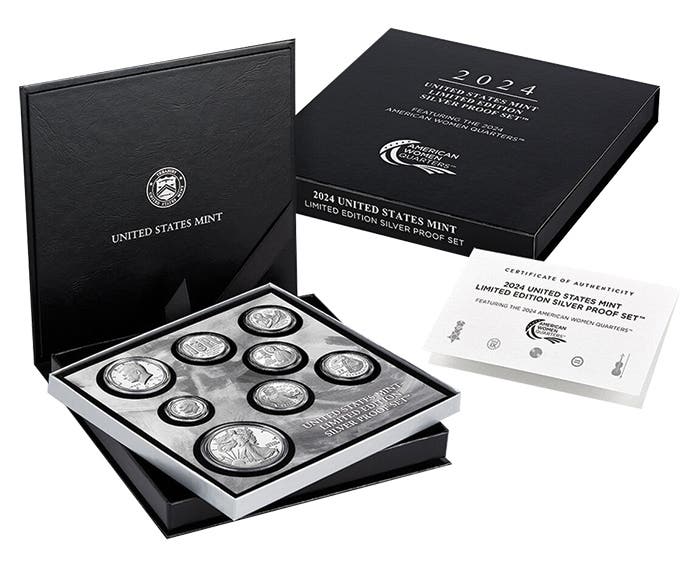Demand for gold Eagles not
The United States Mint took further actions to meet the increased demand for gold and silver bullion coins with production halts for certain bullion offerings and the continued allocation for one ounce gold and silver American Eagle coins.
The United States Mint took further actions to meet the increased demand for gold and silver bullion coins with production halts for certain bullion offerings and the continued allocation for one ounce gold and silver American Eagle coins.
Within the memorandum sent to authorized bullion purchasers, the Mint specifically stated, “gold and silver demand is unprecedented.” Throughout the course of this year, the Mint has provided similar explanations each time a new suspension or allocation program went into effect. While sales of silver Eagle coins are higher than any other year in history, the sales of gold Eagle coins are far below their peak.
The following table shows the ounces of gold sold by the U.S. Mint in the form of American Eagle gold bullion coins. These figures are taken from the Mint Web site. You can visit the link for monthly data, as well as the figures for silver and platinum Eagles.
While the number of ounces of gold sold has already more than doubled from last year, it still does not approach the levels reached during the several prior years, most notably 1998 and 1999.
In terms of monthly demand, during 2008 the highest number of ounces sold was in September at 113,000 ounces. During 1998 and 1999, there were seven months with sales in excess of 200,000 ounces. The highest monthly sales total occurred in October 1998 at 288,500 ounces.
The demand for gold American Eagles is clearly not unprecedented. What’s actually unprecedented is the suspension and allocation of gold Eagle coins. Even amidst the booming demand of the pre-Y2K years, the U.S. Mint never resorted to suspensions or allocation programs. Why is the US Mint having so much trouble keeping pace with demand this year?
The mainstream press has recently given coverage to the U.S. Mint’s suspensions and allocations of gold and silver bullion coins. The stories have always reported about the U.S. Mint’s inability to produce enough coins to meet demand. Given that the Mint has been able to produce far greater quantities of gold bullion coins in the past, I think the real story is the Mint’s inability to obtain the physical gold needed for the coins.
But that just raises another question: With unfulfilled physical demand, why has the market price of gold remained stagnant? I think we will see this situation play out with some interesting consequences during the remainder of the year.
Michael Zielinski is the author of a blog that follows Mint news. It can be found at http://mintnewsblog.blogspot.com
Viewpoint is a forum for the expression of opinion on a variety of numismatic subjects. The opinions expressed here are not necessarily those of Numismatic News.
To have your opinion considered for Viewpoint, write to David C. Harper, Editor, Numismatic News, 700 E. State St., Iola, WI 54990. Send e-mail to david.harper@fwpubs.com.









